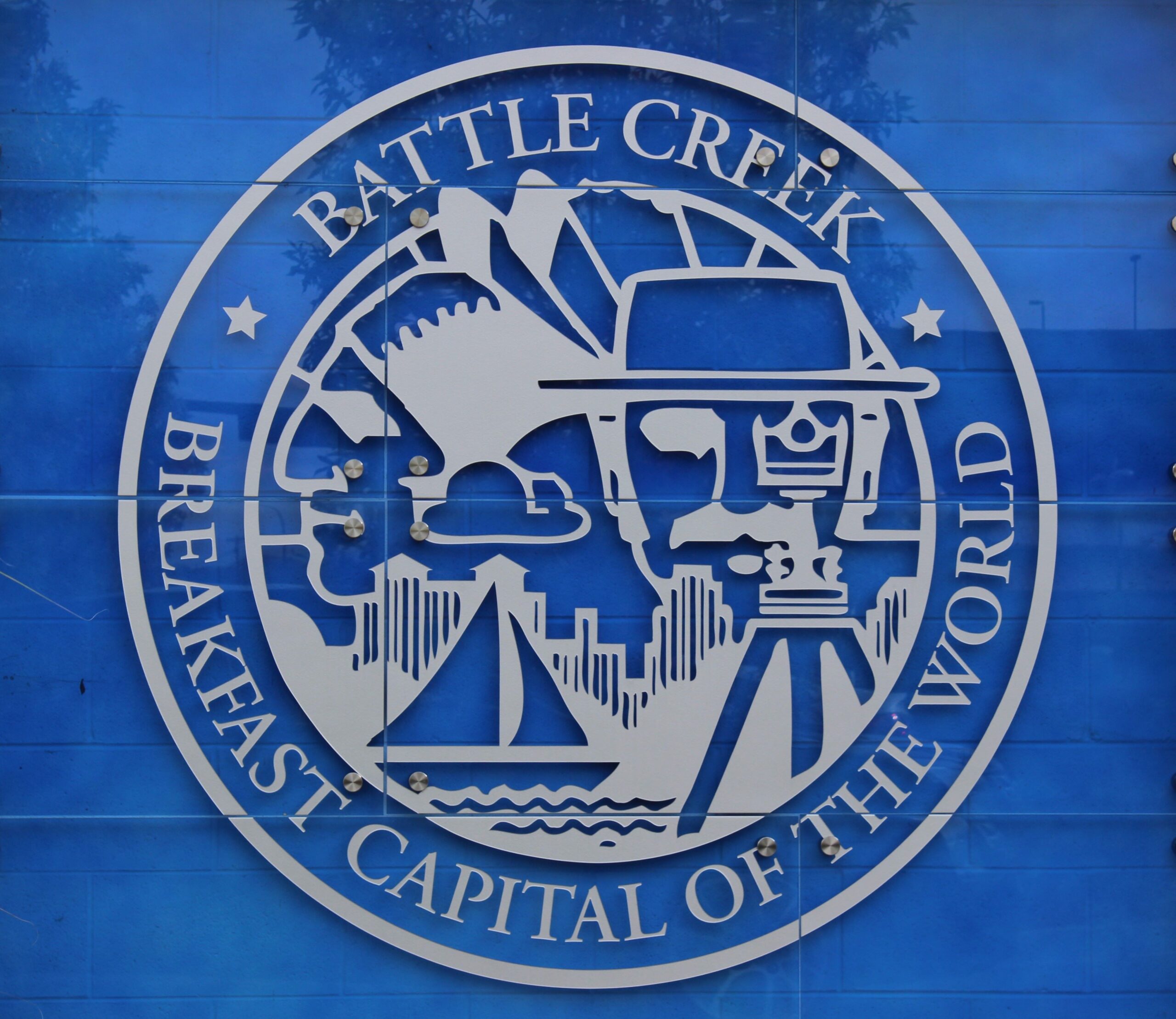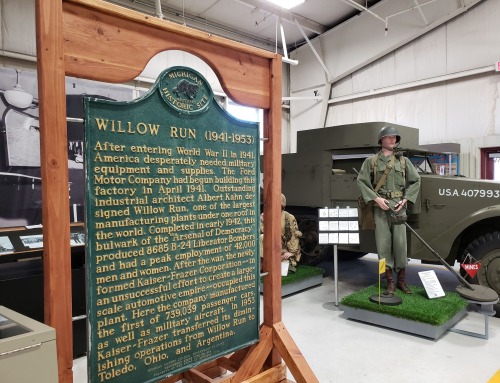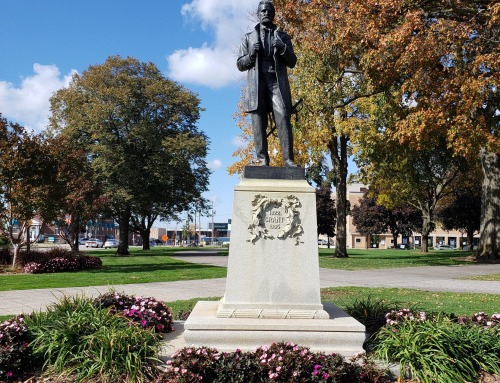I would be willing to bet that almost everyone has heard of Kellogg’s, and also that many know it all began in Battle Creek, Michigan. As for the story of how this business came to be, not so much so. It is a story of bullying, jealousy, and sibling rivalry between the Kellogg brothers, John and Will.
The Early Days
John Harvey Kellogg was born on February 26, 1852, in Livingston County, Michigan, to John Preston and Ann Janette Stanley Kellogg. At the time, the Kelloggs had three daughters, Mary Ann, Laura, and Emma. After John was born, the couple had two more children, Ella and Preston. Their seventh child was Will, the other famous Kellogg brother. The couple then had two more children. Combined with John Preston’s six children from his previous marriage there were sixteen kids in all, however many did not live to adulthood.
John was always considered the golden boy of the family and from a young age, was looked upon as a brilliant child. He ended up leaving home to attend college, first at Michigan State Normal School (now Eastern Michigan University), and then New York University’s Medical College.
Will, on the other hand, was viewed as having low intelligence by the family. He was continuously verbally and physically abused by his brother, John, who eventually left for college. Will ended up dropping out of school after the sixth grade and went to work at his father’s broom factory.
Battle Creek Sanitarium
In the meantime, John graduated from medical school. It was during this time period that Americans were obsessed with healthy bowel movements, and John worked to capitalize on this. He became a renowned doctor running the Battle Creek Sanitarium. A sanitarium is an establishment for the medical treatment of people who are convalescing or have a chronic illness. Patients went there for many reasons, such as therapy for specific regimens, like diet, fresh air, and exercise. Many famous people, including President William Howard Taft, Thomas Edison, Henry Ford, and Amelia Earhart all sought treatment from this facility.
The brothers were both raised as Seventh-Day Adventists, and John, from this aspect, wanted to prevent diseases before they happened. He encouraged a good, healthy lifestyle for all his patients. The sanitarium became quite popular, and John decided to have his younger brother come to work at the facility with him.
Now twenty years old, Will accepted the offer and began to work at the sanitarium. His first official title was bookkeeper, but his job is more accurately described as being John’s ‘lackey’. John, again, was none too kind to his brother in this environment. H mandated that Will follow him around with a notebook to write down all John’s thoughts and ideas, this even included following him into the bathroom. John also required his own brother to refer to him as Dr. Kellogg.
Fateful Accident
Will tolerated this mistreatment and even helped John in his research to improve the vegetarian diet of the sanitarium patients. John had the initial idea for creating a pre-cooked, ready-to-eat breakfast cereal that would promote a healthy gut. As usual, Will did the majority of the research and work.
In 1894, Will accidentally left out some boiled wheat overnight. When he came back the next morning, he noticed mold growing on the wheat. Despite this, he put the mixture through a roller, and it emerged as a large, thin flake. Will then baked the flakes and served this new breakfast cereal with milk. It quickly became a favorite of the patients. While Will wanted to keep the new discovery for making the cereal a secret, John disagreed and allowed anyone to view the operation at the sanitarium. Interestingly, one of the patients who viewed the process was CW Post, who recognized the potential of the cereal flake and later actually copied the process making his own cereal. He also formulated a cereal beverage coffee substitute called Postum, which you can still buy today.
Later when some of the patients were discharged from the sanitarium, they would write back to Will requesting him to ship them some of the wheat flakes. Eventually, because of the increased request for the cereal, Will set up a small factory in the sanitarium. He wanted to expand the cereal business further but John did not approve, so Will was forced to keep it small as he continued to experiment with new kinds of cereal.
Birth of the Corn Flake
In one particular experiment, Will tried substituting corn for wheat. It was an instant success. So, in 1897, John finally agreed to start the Sanitas Food Company with Will to meet the increasing demand for the cereal. Will still wanted to take the company in a different direction, and in 1906, he offered to buy John out. At that time, John was in debt and gladly took the deal. Will was finally out from under his brother’s control and was able to run the business as he saw fit. He renamed his business Battle Creek Toasted Corn Flake Company, pouring all the money he had saved into ads and marketing. One unique idea he came up with was to add his signature to the top front of all the cereal boxes so people would know that it was his product.

Early Kellogg brother cereal products on display at the W.K. Kellogg Manor in Hickory Corners, Michigan.
Kellogg Family Feud
In 1908, John created his own new cereal company and started selling a version of Will’s cereal, but his venture eventually changed from cereal to promoting soy products. Two years later, in 1910, Will asked a judge to put an injunction against his brother for making a Kellogg’s-brand cereal. He didn’t want consumers to see what he considered to be John’s inferior product, and think it was his. The brothers reached a settlement out of court, but there was continued legal sparring for decades.
By 1916, John marketed his sterilized bran cereal, while Will was making his own version. John then filed a restraining order, and within a year, they were back in court. At the heart of the lawsuit was the question: Who had the right to use the name Kellogg on a box of cereal? In this case, Will won hands down. The judge not only dismissed John’s case, but also decided that Will was entitled to all the money that John had made off his cereal in the past decade. John appealed to the Michigan Supreme Court, but they backed Will as well.
Money Can’t Buy Happiness
Will continued to expand the company into a huge success, even through the Great Depression. Unfortunately, this Depression had a negative effect on John. It forced the sanitarium to close, so John took the initiative to start a new one in Florida that eventually became more successful. At this time, he also wrote 15 books regarding his theories on health.
Though wealthy, Will lived a very modest life and gave much of his money to charity. He created a school for handicapped children, a civic auditorium, a junior high school, and a youth recreation center. He was even acknowledged by President Herbert Hoover at the White House Conference on Child Health and Protection.
Throughout their adulthood, John became increasingly jealous of Will’s success and angry about the commercial use of the Kellogg’s name. Despite all his victories, Will still felt beaten down. He became bitter, passive-aggressive, paranoid, and hostile. Will was married twice, first to Elmirah Osborn in 1880. The couple had five children together, though only three survived through childhood. Elmirah died in 1912.
The Bitter End
Will married Carrie Staines in 1918. Carrie was a female physician at the Sanitarium. When John found out the couple were dating, he threatened to fire Carrie. Will and Carrie had no children. Sadly, both of Will’s marriages suffered because of his bleak attitude, which also carried into his role as a father. Two of his surviving sons broke off all relations with him in adulthood. Will retired from the business in 1938. He gave a majority interest in the company to his charitable organization, the W.K. Kellogg Foundation.
John and Will never repaired their broken relationship. If they had to meet, Will insisted on having a third party in the room. John, who got married in 1879, had 8 adopted children, and foster many others. On his deathbed in 1943, John wrote a letter to Will, apologizing for the way he had treated him in the past and expressing the desire to make amends. His secretary never sent it because she felt it made John look weak. She held onto it for years. When Will was on his deathbed in 1948, she decided it was time to deliver the letter to its intended recipient. Since Will was blind with glaucoma, the letter had to be read to him. I wonder what Will’s real thoughts were when hearing that his brother did have some admiration for him
Final Thoughts
Such a complex relationship. Family dysfunction and sibling rivalry at its best! I have siblings of my own and I love them all dearly so I can’t imagine why John felt the need to control his brother. Did he treat his sisters in the same way? What was his motivation to be unkind? Was he jealous and if so of what? Did John truly feel inferior from the expectations his family put on him? Did he feel stress from his family to succeed? And what of Will, did he purposely try to best John when he finally could? Did he intentionally try to make John look bad? Why did Will become so embittered later in life? Why didn’t he care for his own family? What made both brothers so miserable in their own lives that they had to make others unhappy? Sometimes the more we learn about people the more questions we have. A family name so well known in many a household, yet it’s a history so sad that most would not desire it. I know I wouldn’t.







Leave A Comment
You must be logged in to post a comment.